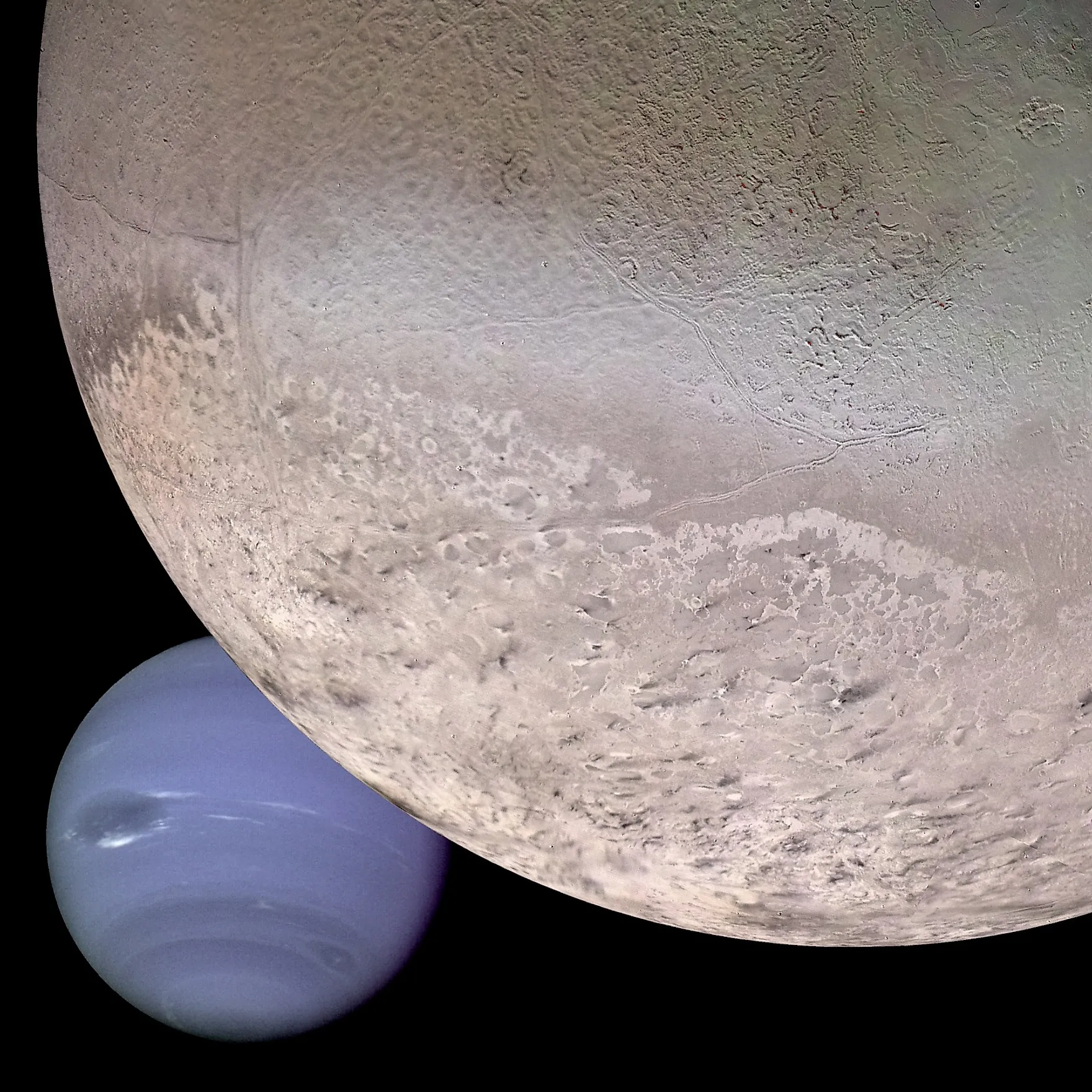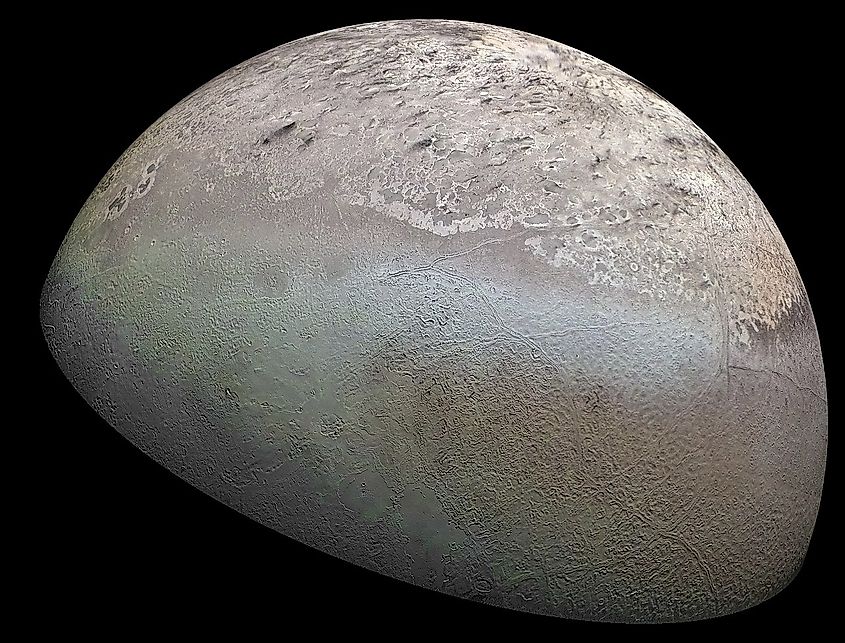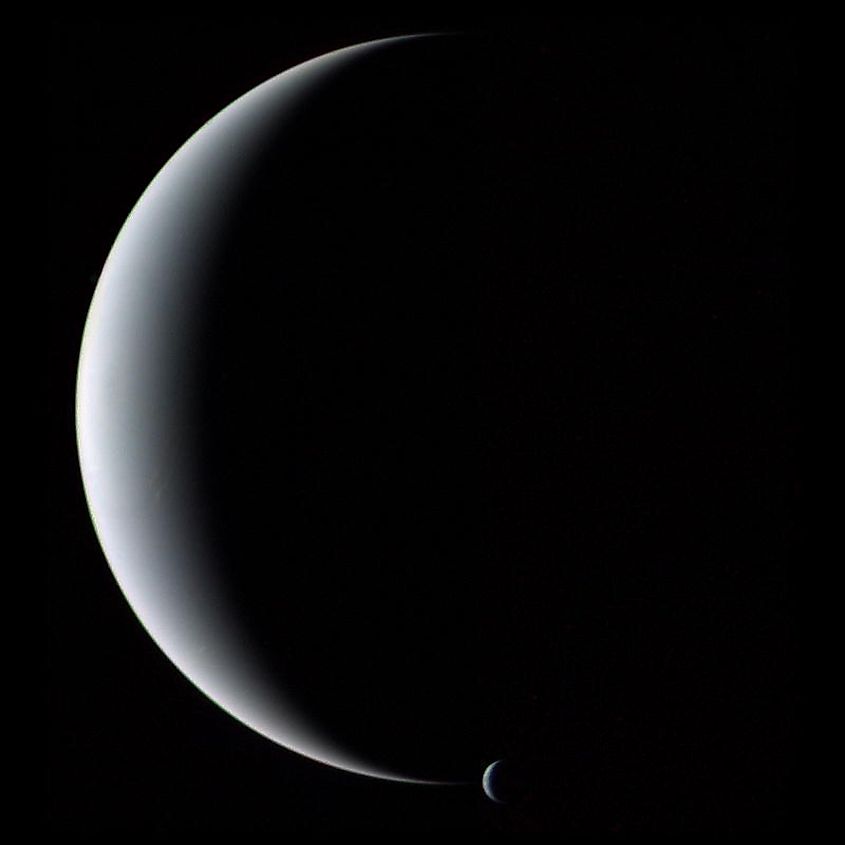
Neptune’s Moon Triton
Neptune is the furthest planet from the sun in our solar system at a distance of 2.8 billion miles (4.5 billion kilometres). Neptune is orbited by 14 individual moons. Of those 14 moons, one of them stands out among all others. The largest moon of Neptune is called Triton. Triton is the seventh largest moon in the solar system and composes 99.5% of the total mass of all moons in Neptune’s orbit. In fact, Triton is the only moon of Neptune massive enough to pull itself into a spherical shape. Triton has a diameter of 1,680 miles (2,710 kilometres), making it roughly 5.5% the diameter of Neptune. Triton is one of the most unique and interesting moons in the solar system. What makes this moon so unique?
Discovery Of Triton

Triton was discovered shortly after Neptune’s discovery in 1846. Neptune was the first and only planet in our solar system to be discovered through mathematical predictions rather than observation. Variations in the orbit of Uranus led astronomers to conclude that another planet must be orbiting the sun beyond Uranus, and in 1846, astronomers predicted the existence of Neptune. Observations soon confirmed the existence of another planet, and a mere 17 days after Neptune’s confirmation, the astronomer William Lassel discovered its largest moon, Triton. To keep with the tradition of naming objects in the solar system after various characters from Greek and Roman mythology, the newly discovered moon was named Triton, after Poseidon’s son in Greek mythology.
Orbit And Rotation
Triton’s orbit is one of its most unique, fascinating features. Unlike the vast majority of moons in the solar system, Triton moves in retrograde. In other words, Triton moves in a direction that is opposite to Neptune’s rotation. Neptune rotates counterclockwise, yet Triton orbits clockwise. Moons that orbit the gas giants likely formed out of small disks of material that orbited the gas giants shortly after they formed. Moons slowly coalesced out of this material, which always orbits the same direction as the planet’s rotation. Since Triton moves the opposite direction, astronomers have deduced that Triton probably never formed in Neptune’s orbit. Rather, Triton was likely a dwarf planet that orbited the sun in the Kuiper Belt. Eventually, it passed too close to Neptune and was caught in the planet’s gravity. It takes Triton roughly 5.8 Earth days to orbit Neptune. Triton is also tidally locked to Neptune, meaning the moon has no rotation and one side constantly faces Neptune.
Composition Of Triton

Triton has only ever been seen by a single spacecraft. To date, the Voyager 2 spacecraft is the only mission to ever visit Neptune and take images of the planet and its moons. Since Voyager 2 completed a flyby, astronomers were only able to map roughly 40% of Triton’s surface, and so there is still a lot of mystery surrounding this moon. Triton’s composition is similar to dwarf planets in the Kuiper Belt, such as Pluto. The surface of Triton is covered in a layer of frozen nitrogen, with nitrogen making up about 55% of the moon’s crust. Water makes up between 15 and 35% of Triton’s crust, while the remaining composition is frozen carbon dioxide. The interior of Triton is mostly water ice and rock. The interior of Triton is somewhat comparable to that of Earth. Triton is covered in a thin crust, with the interior containing a solid core and a mantle. Interestingly, the interior of Triton is believed to contain an abundance of radioactive material, which in turn decays and releases heat energy. This heat energy melts subsurface ice, creating a subsurface ocean of liquid water. Triton is a potentially habitable world due to the presence of liquid water beneath its surface, along with the discovery of organic compounds on its surface.
A Doomed Moon
The retrograde motion of Triton around Neptune has an interesting impact on the future of the moon. Neptune is slowly stealing the rotational energy of Triton, causing its orbit to shrink slowly over time. Eventually, Triton’s orbit will be so small that it will either impact Neptune or break apart in orbit. Based on the rate of decay in its orbit, astronomers estimate that this will occur in about 3.6 billion years. When Triton does meet its end, debris from the collision will enter into Neptune’s orbit and form a vast system of rings that will probably look similar to Saturn’s ring system.











